Discover how to care for the eye-catching strawberry shake philodendron with this comprehensive guide. Learn about its light, water, humidity and temperature needs, as well as potting, fertilizing and propagation tips. Keep your vibrant, variegated beauty thriving with these easy-to-follow instructions.
If you’re a plant enthusiast on the hunt for a unique and eye-catching addition to your indoor jungle, look no further than the strawberry shake philodendron. This stunning hybrid plant boasts vibrant pink and green variegated leaves that are sure to turn heads and add a pop of color to any space. In this comprehensive care guide, we’ll explore everything you need to know to keep your strawberry shake philodendron thriving and looking its best.
Here’s a detailed chart for the Strawberry Shake Philodendron:
| Category | Information |
|---|---|
| Botanical Name | Philodendron spp. (often identified as Philodendron erubescens ‘Strawberry Shake’) |
| Common Name | Strawberry Shake Philodendron |
| Plant Type | Evergreen perennial (tropical) |
| Hardiness Zone | 10-11 (grown indoors in cooler climates) |
| Sun Exposure | Bright, indirect light; tolerates lower light conditions but grows more slowly |
| Soil Type | Well-draining potting mix, such as one designed for aroids or a mix of peat, perlite, and orchid bark |
| Watering | Keep soil consistently moist but not soggy; allow the top inch of soil to dry out between waterings |
| Growth Habit | Vining or climbing; can be grown on a support or allowed to trail |
| Height/Spread | Can grow several feet tall with proper support; width depends on the container and support |
| Special Features | Notable for its striking pink and green foliage, resembling a strawberry milkshake; compact and decorative |
Understanding the Strawberry Shake Philodendron
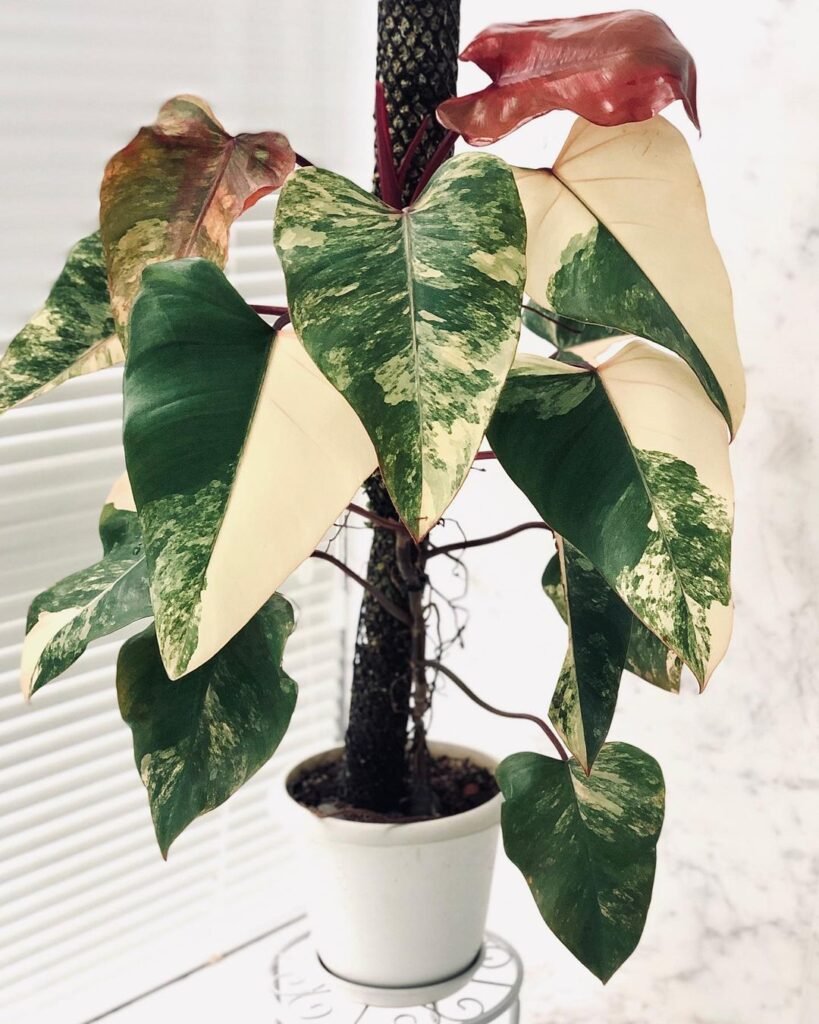
Before we dive into the care requirements, let’s take a moment to appreciate the unique characteristics of this plant. The strawberry shake philodendron is a hybrid variety that was created by crossing the philodendron melanochrysum and philodendron verrucosum species. This combination resulted in a plant with striking leaves that feature shades of pink, red, and green in a mesmerizing variegated pattern.
One of the most distinctive features of the strawberry shake philodendron is its compact growth habit. Unlike some of its larger philodendron cousins, this variety typically stays relatively small, making it an ideal choice for smaller living spaces or as a tabletop or desk plant.
Light Requirements
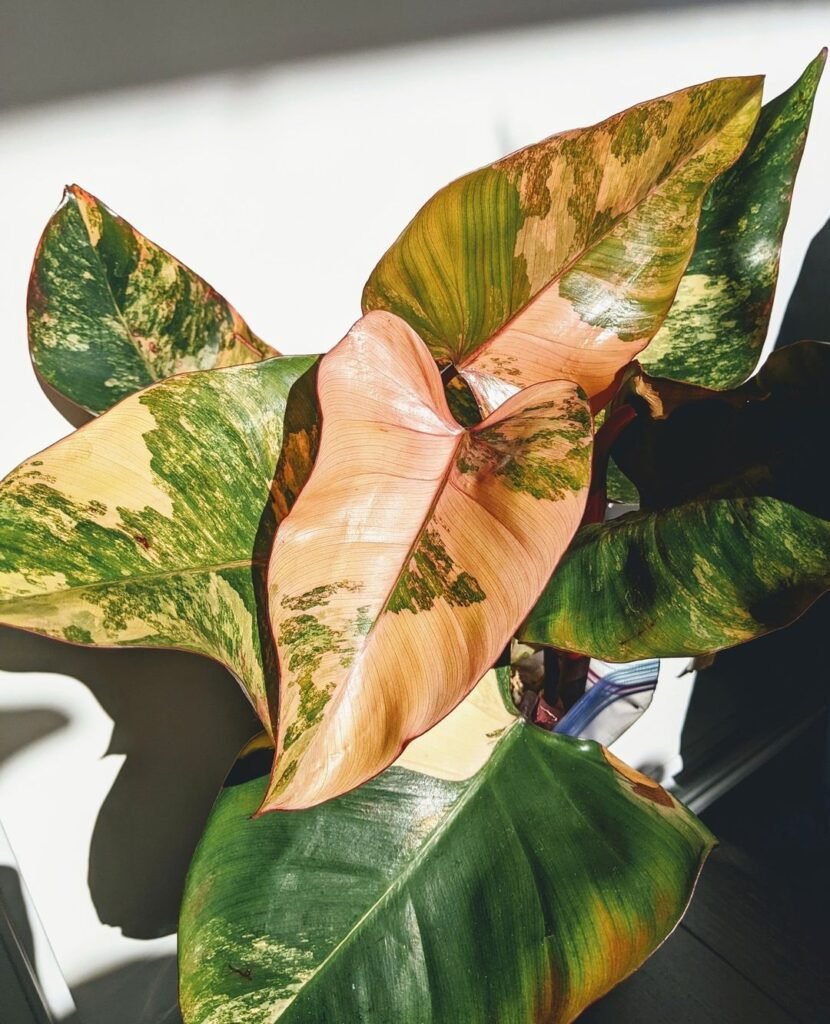
Like many philodendrons, the strawberry shake variety prefers bright, indirect light. Direct sunlight can scorch its delicate leaves, so it’s best to position your plant in a spot that receives bright, filtered light throughout the day. An east or west-facing window is often ideal, as it provides the right balance of light without being too intense.
If you notice your plant’s leaves turning pale or losing their vibrant pink and green variegation, it could be a sign that it’s not receiving enough light. In this case, you may need to move your strawberry shake philodendron to a brighter location or consider supplementing with a grow light.
Watering Needs
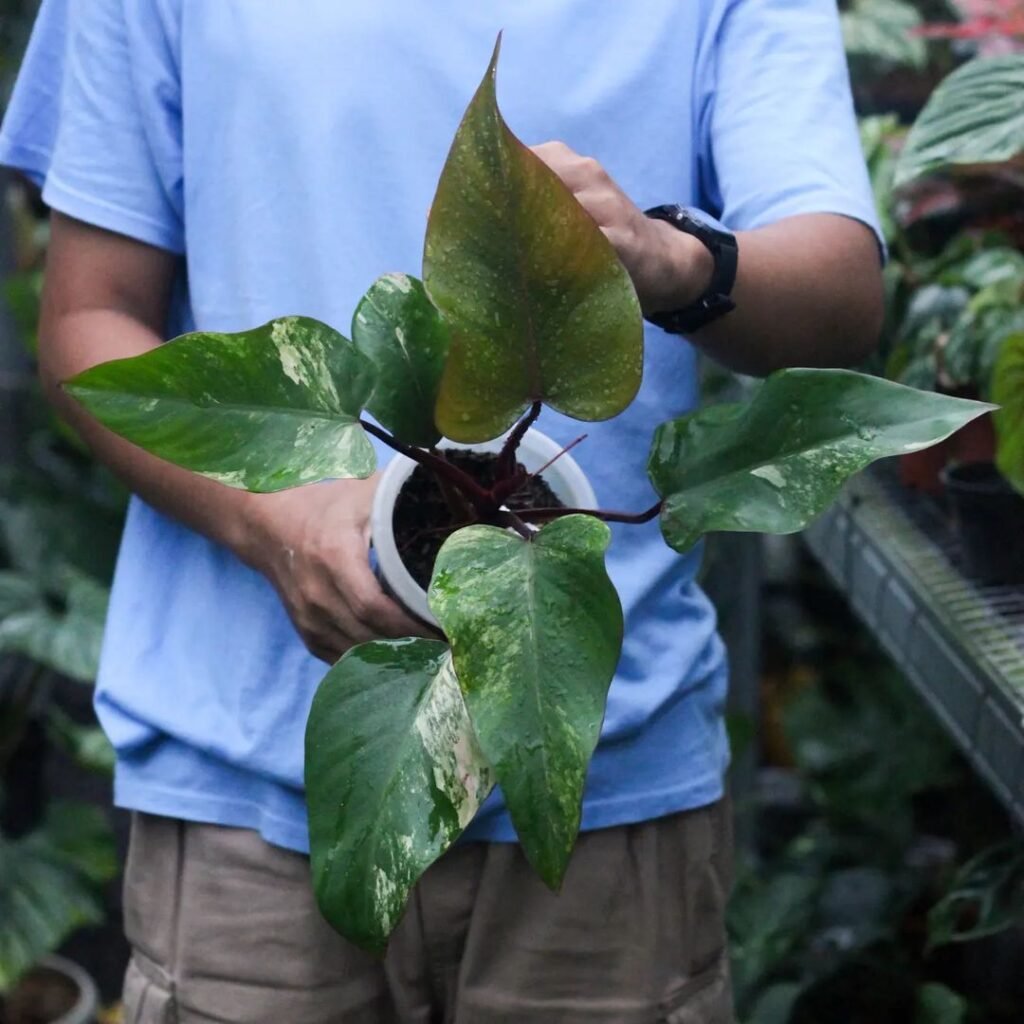
Proper watering is crucial for the health and longevity of your strawberry shake philodendron. These plants prefer consistently moist, but not waterlogged, soil. During the spring and summer months, when the plant is actively growing, aim to keep the soil evenly moist by watering when the top inch or two of soil feels dry to the touch.
In the winter, when growth slows down, you can allow the soil to dry out slightly more between waterings. However, be careful not to let the plant dry out completely, as this can cause the leaves to wilt and potentially drop.
When watering, it’s best to use room-temperature water and thoroughly soak the soil until water runs out of the drainage holes at the bottom of the pot. This will help ensure that the entire root system receives moisture. Avoid letting your strawberry shake philodendron sit in standing water, as this can lead to root rot.
Humidity and Temperature

The strawberry shake philodendron is a tropical plant and prefers higher humidity levels than most homes can provide. Aim to maintain a humidity level of at least 50% for optimal growth and leaf health. If your home is particularly dry, you can increase humidity levels by misting the leaves regularly, using a pebble tray filled with water or investing in a small humidifier.
In terms of temperature, this variety prefers warm conditions between 65°F and 80°F (18°C and 27°C). Avoid placing your plant near drafty windows or doors, as sudden temperature changes can stress the plant and cause leaf damage or drop.
Soil and Repotting
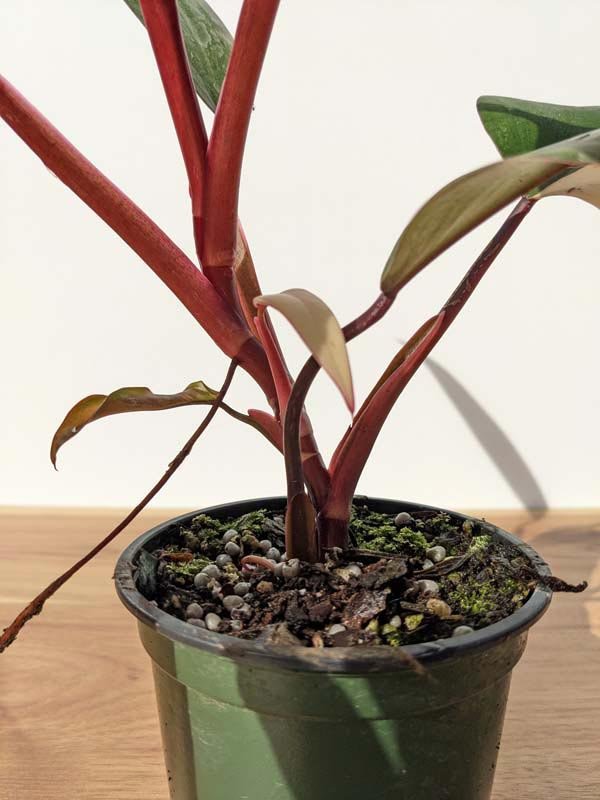
The strawberry shake philodendron prefers a well-draining, nutrient-rich potting mix. You can find premixed potting soils specifically formulated for philodendrons and other tropical plants at most garden centers or nurseries. Alternatively, you can create your own potting mix by combining equal parts peat moss, perlite and bark chips or coarse sand.
When it comes to repotting, the general rule of thumb is to do so every one to two years, or when the plant becomes rootbound (roots start to grow out of the drainage holes or circle the inside of the pot). Choose a pot that is only one or two inches larger than the previous one, as philodendrons prefer to be slightly rootbound.
During the repotting process, gently remove the plant from its current pot and carefully loosen the root ball. This will encourage new root growth and help the plant establish itself in its new home. Be sure to use a well-draining pot with drainage holes to prevent water from accumulating and causing root rot.
Fertilizing
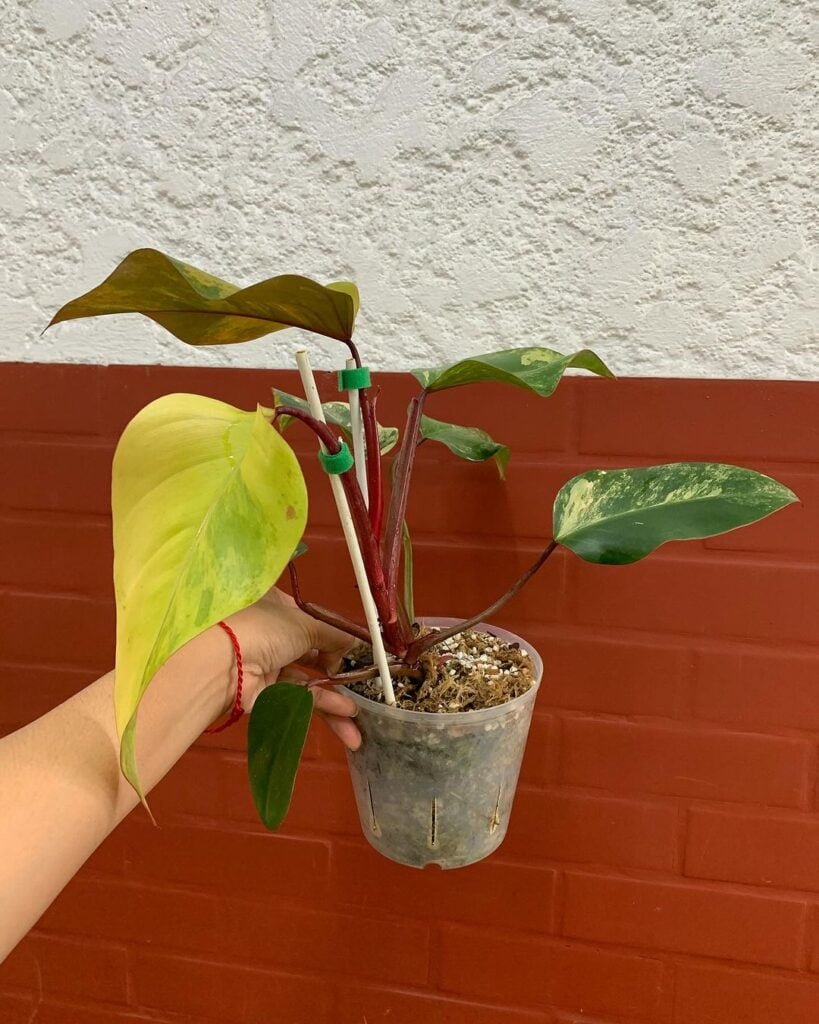
To keep your strawberry shake philodendron looking its best, it’s important to provide it with the right nutrients. During the spring and summer growing season, you can fertilize your plant every four to six weeks using a balanced, water-soluble fertilizer diluted to half strength.
Before fertilizing, it’s a good idea to water your plant thoroughly to avoid fertilizer burn. Apply the diluted fertilizer solution to the soil, taking care not to get any on the leaves, as this can cause damage.
In the winter months, when growth slows down, you can reduce or stop fertilizing until the following spring.
Pruning and Propagation
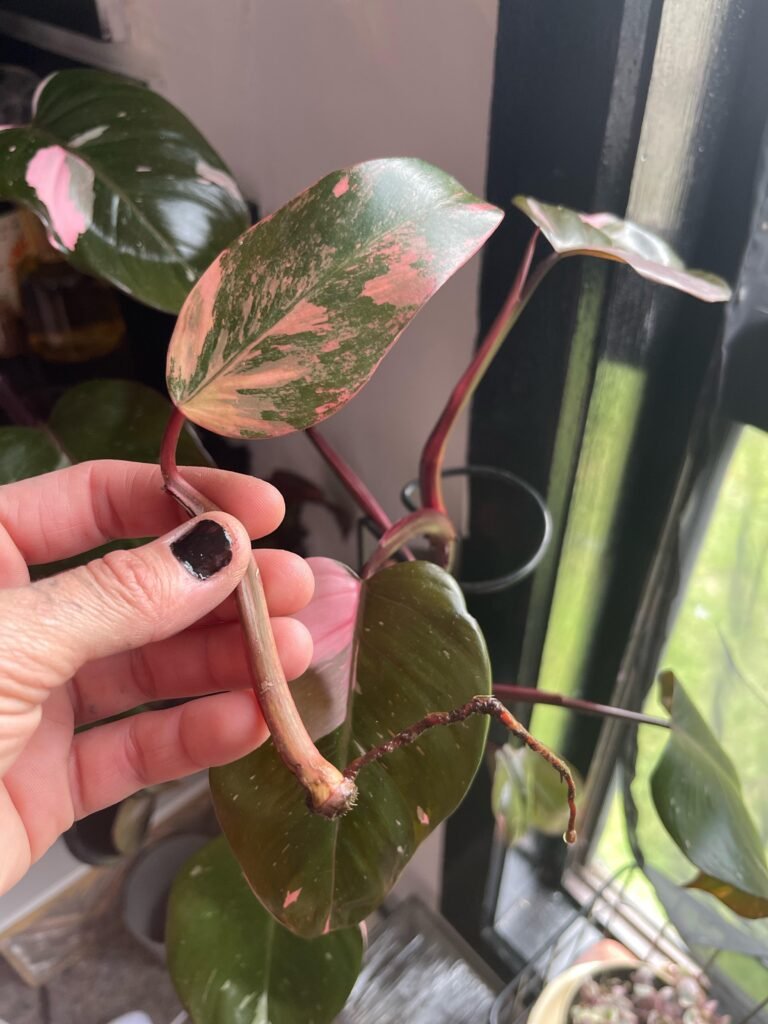
The strawberry shake philodendron doesn’t typically require extensive pruning, but you may want to remove any dead or damaged leaves to maintain its appearance and encourage new growth. Use clean, sharp scissors or pruning shears to cut off any yellow or brown leaves at the base of the stem.
Propagating your strawberry shake philodendron is a great way to create new plants and share this beauty with friends and family. The easiest method is through stem cuttings, which can be rooted in water or directly in a well-draining potting mix.
To take a stem cutting, use a clean, sharp knife or scissors to cut a healthy stem just below a node (the point where a leaf emerges from the stem). Remove any lower leaves and place the cutting in a jar or glass of water, making sure at least one node is submerged. Once roots have formed, you can transplant the cutting into a pot with fresh potting mix.
Common Issues and Troubleshooting
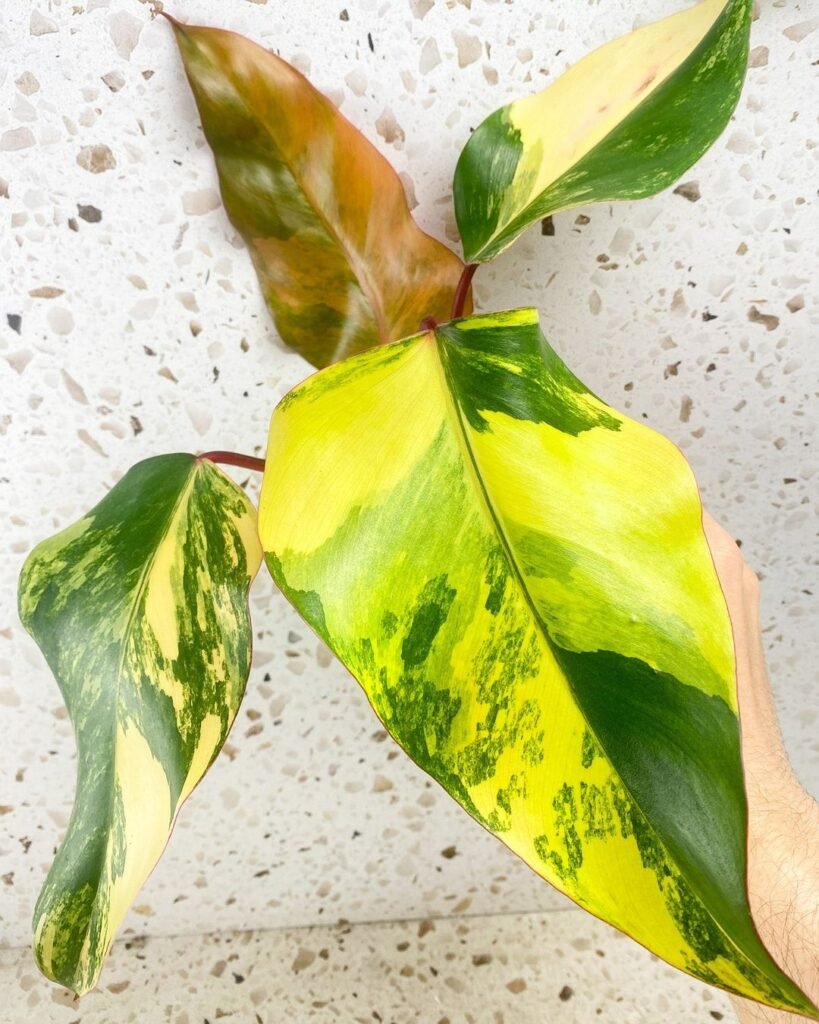
While the strawberry shake philodendron is generally a low-maintenance plant, it can sometimes encounter a few common issues.
Here’s how to identify and address some of the most common problems:
- Leaf Drop: This can be a sign of underwatering, low humidity, or sudden changes in temperature or light conditions. Check the soil moisture levels and adjust your watering schedule accordingly. Increase humidity around the plant and avoid moving it to a new location too abruptly.
- Brown Leaf Tips or Edges: This is often caused by low humidity or dry air. Increase humidity levels by misting the leaves regularly or using a humidifier.
- Fading Variegation: If the vibrant pink and green variegation on your strawberry shake philodendron starts to fade or become more muted, it could be a sign that the plant is not receiving enough light. Move it to a brighter location or supplement with a grow light.
- Pests: Mites, mealybugs, and spider mites can sometimes infest the strawberry shake philodendron. Isolate the plant and treat it with an insecticidal soap or neem oil solution, following the product instructions carefully.
With the right care and attention, your strawberry shake philodendron will thrive and add a burst of color and tropical flair to your indoor space. Remember to provide bright, indirect light, consistent moisture, and high humidity, and your plant will reward you with its stunning variegated leaves for years to come.
Pingback: Aglaonema Pictum Tricolor Care Guide Gardeners Schools
Pingback: How to Grow and Care for Elephant Ear Plants -
Pingback: Complete Guide to Growing Dragon Fruit Plants at Home -
Pingback: Strawberry Shake Philodendron Care | Gardening ...
Pingback: Foxgloves: The Complete Guide to Growing and Caring
Pingback: Philodendron Mayoi Care Guide Gardeners Schools